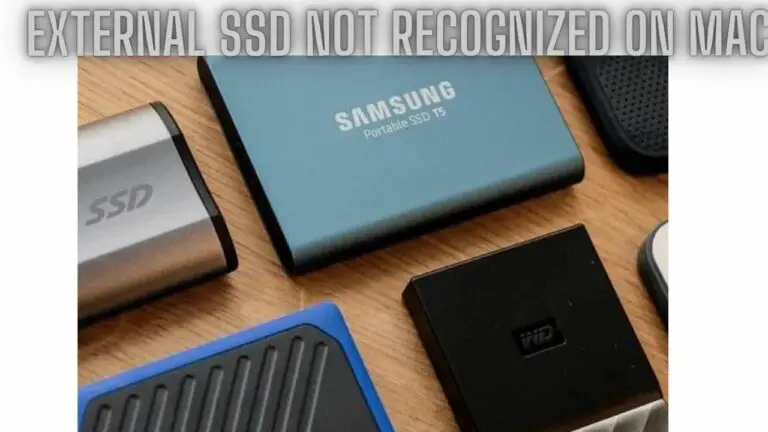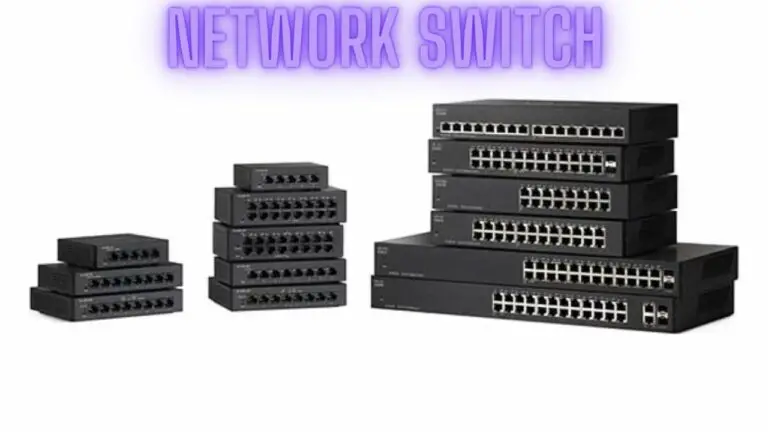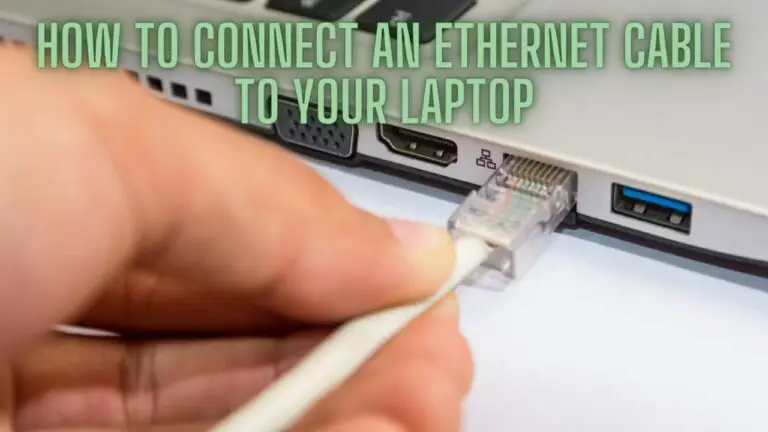Boosting Your Internet: How to Make Your Connection Stable and Faster
Introduction
In today’s digital age, a fast and reliable internet connection is essential for various activities, including remote work, online learning, streaming entertainment, gaming, and staying connected with friends and family. However, many factors can affect internet speed and performance, leading to frustration and inconvenience for users.
This guide aims to provide practical tips and strategies for boosting your internet speed and optimizing your online experience. Whether you’re struggling with slow downloads, buffering videos, or laggy online gaming, understanding the factors influencing internet speed and implementing effective solutions can help you achieve a smoother and more seamless internet connection.
From optimizing your Wi-Fi network and upgrading your router to exploring different internet service provider (ISP) options and enhancing security measures, this guide covers a range of topics to help you maximize your internet speed and reliability. By following the advice outlined in this guide, you can improve your online productivity, enjoyment, and overall satisfaction with your internet service.
So, whether you’re a casual internet user, a remote worker, or a dedicated gamer, let’s dive in and explore how you can boost your internet and enhance your online experience.
Understanding Internet Speed
Internet speed refers to the rate at which data is transferred between your device (such as a computer, smartphone, or tablet) and the internet. It is typically measured in bits per second (bps), kilobits per second (kbps), megabits per second (Mbps), or gigabits per second (Gbps), depending on the scale of the transfer.
Here are some key concepts to help you understand internet speed:
- Bandwidth: Bandwidth refers to the maximum amount of data that can be transmitted over an internet connection in a given amount of time. It is often expressed in bits per second (bps) or its multiples (kbps, Mbps, Gbps). Higher bandwidth allows for faster data transfer speeds.
- Download Speed: Download speed measures how quickly data can be transferred from the internet to your device. It is typically the most important metric for users, as it determines how fast web pages load, files download, and streaming media plays without interruption.
- Upload Speed: Upload speed measures how quickly data can be transferred from your device to the internet. It is important for activities such as uploading files, sending emails with attachments, and participating in video calls or online gaming where real-time communication is required.
- Latency (Ping): Latency, often referred to as ping, measures the time it takes for data to travel from your device to a server on the internet and back again. It is measured in milliseconds (ms) and can affect the responsiveness of online applications and gaming experiences. Lower latency is generally desirable, especially for activities requiring real-time interaction.
- Packet Loss: Packet loss occurs when data packets traveling between your device and the internet are dropped or fail to reach their destination. It can result in degraded performance, slow speeds, and disruptions in online activities. Minimizing packet loss is essential for maintaining a stable and reliable internet connection.
Understanding these aspects of internet speed can help you assess the performance of your internet connection and identify potential areas for improvement. By measuring your download and upload speeds, monitoring latency, and addressing issues such as bandwidth congestion or network interference, you can optimize your internet experience and ensure that it meets your needs for speed, reliability, and responsiveness.
Assessing Your Current Internet Speed
Assessing your current internet speed is an important first step in identifying any issues with your connection and determining whether you are getting the speeds promised by your internet service provider (ISP). There are several methods you can use to measure your internet speed:
- Online Speed Testing Websites:
- There are numerous websites available that offer free internet speed tests. Some popular options include Speedtest by Ookla (speedtest.net), Fast.com, and Google’s Speed Test. Simply visit one of these websites and click the “Start” or “Begin Test” button to initiate the speed test. The website will then measure your download and upload speeds, as well as your ping (latency), and provide you with the results.
- ISP Speed Test Tools:
- Many ISPs offer their own speed testing tools on their websites. These tools may be specifically tailored to your ISP’s network and may provide more accurate results for your particular connection. Check your ISP’s website or contact their customer support to find out if they offer a speed testing tool.
- Mobile Apps:
- There are also mobile apps available for both iOS and Android devices that can measure your internet speed. Some popular apps include Speedtest by Ookla, Fast Speed Test, and Meteor. These apps work similarly to online speed testing websites and provide you with detailed information about your internet connection’s performance.
- Built-in Router Features:
- Some modern routers come with built-in speed testing features that allow you to measure your internet speed directly from the router’s settings interface. Check your router’s documentation or login to its admin panel to see if this feature is available.
When conducting a speed test, it’s essential to ensure that no other devices on your network are using a significant amount of bandwidth, as this can affect the accuracy of the results. For the most accurate measurement, connect your device directly to your modem or router using an Ethernet cable, bypassing any Wi-Fi connections.
Once you have the results of your speed test, compare them to the speeds promised by your ISP in your service plan. If your actual speeds are significantly lower than what you are paying for, you may want to contact your ISP to troubleshoot the issue or consider upgrading to a higher-speed plan if available. Additionally, if you are experiencing slow speeds or poor performance, the speed test results can help you identify potential issues with your internet connection that may need to be addressed.
Identifying Factors Affecting Internet Speed
Identifying factors that can affect your internet speed is crucial for troubleshooting and optimizing your connection. Several factors can impact internet speed, including:
- Network Congestion: Network congestion occurs when many users in your area are simultaneously using the internet, leading to decreased speeds for everyone. This is common during peak usage times, such as evenings and weekends, or in densely populated areas.
- Distance from the Router: The farther you are from your Wi-Fi router, the weaker the signal strength, which can result in slower internet speeds. Thick walls, obstructions, and interference from other electronic devices can also weaken the Wi-Fi signal.
- Router Performance: The performance and capabilities of your router can significantly impact internet speed. Older or lower-quality routers may not support the latest Wi-Fi standards or have limited bandwidth capacity, resulting in slower speeds.
- Internet Service Plan: The internet service plan you subscribe to from your ISP determines the maximum download and upload speeds available to you. If you are experiencing slow speeds, it may be because your plan does not provide sufficient bandwidth for your needs.
- Wi-Fi Interference: Interference from other electronic devices, neighboring Wi-Fi networks, or household appliances operating on the same frequency can degrade Wi-Fi performance and reduce internet speeds.
- Hardware Limitations: The capabilities of your device’s hardware, such as the processor, memory, and network adapter, can affect internet speed. Older or less powerful devices may struggle to handle high-speed internet connections effectively.
- Software Issues: Background processes, software updates, malware, or antivirus programs running on your device can consume bandwidth and affect internet speed. It’s essential to regularly update software and perform malware scans to ensure optimal performance.
- Wired vs. Wireless Connection: Wired connections typically offer faster and more reliable speeds compared to wireless connections. If possible, connecting your device directly to the router using an Ethernet cable can help improve internet speed.
- Weather Conditions: Extreme weather conditions such as heavy rain, snow, or strong winds can physically damage infrastructure, such as cables or antennas, leading to internet service disruptions and slower speeds.
- ISP Throttling: Some ISPs may throttle internet speeds for certain activities or during peak usage times to manage network traffic and ensure fair usage among subscribers.
Identifying these factors can help you pinpoint the root cause of slow internet speeds and take appropriate steps to address them. Whether it involves optimizing your Wi-Fi setup, upgrading your router or internet plan, or troubleshooting software or hardware issues, understanding these factors is essential for achieving optimal internet performance.
Tips for Improving Internet Speed
- Check Your Internet Plan: Start by verifying the internet plan you are subscribed to with your ISP. Ensure that you are receiving the advertised speed as per your plan. If not, consider upgrading to a higher-speed plan if available.
- Use Wired Connections: Whenever possible, connect your devices directly to the router using Ethernet cables instead of relying on Wi-Fi. Wired connections typically offer faster and more stable speeds compared to wireless connections.
- Position Your Router Correctly: Place your router in a central location within your home or office to ensure optimal coverage. Avoid placing it near walls, large appliances, or other obstacles that can interfere with the Wi-Fi signal. Elevating the router and avoiding obstructions can help improve signal strength.
- Update Your Router Firmware: Check for firmware updates for your router regularly and install them to ensure that your router is running the latest software. Updated firmware may include performance improvements and security patches that can enhance internet speed and reliability.
- Optimize Wi-Fi Settings: Adjust the settings on your router to optimize Wi-Fi performance. This includes choosing the optimal Wi-Fi channel, enabling band steering (if available), and configuring Quality of Service (QoS) settings to prioritize certain types of traffic.
- Limit Background Activities: Avoid running bandwidth-intensive activities such as downloading large files or streaming HD videos while performing tasks that require high-speed internet, such as online gaming or video conferencing. These activities can consume bandwidth and slow down your connection.
- Use Wi-Fi Extenders or Mesh Systems: If you have a large home or office with Wi-Fi dead zones, consider installing Wi-Fi extenders or a mesh Wi-Fi system to improve coverage and signal strength in those areas. These devices can help eliminate Wi-Fi dead spots and provide more consistent speeds throughout your space.
- Upgrade Your Router: If your router is outdated or unable to handle high-speed internet connections, consider upgrading to a newer model that supports the latest Wi-Fi standards (such as Wi-Fi 6) and offers advanced features for better performance and reliability.
- Monitor Network Traffic: Use network monitoring tools or apps to identify devices or applications that are consuming a disproportionate amount of bandwidth. This can help you identify and address any issues that may be affecting overall internet speed.
- Consider Alternative ISPs: If you consistently experience slow speeds or unreliable connectivity with your current ISP, explore other internet service providers in your area. Compare their plans, pricing, and customer reviews to find a provider that offers faster and more reliable internet service.
By implementing these tips, you can improve your internet speed and enjoy a faster and more reliable online experience for browsing, streaming, gaming, and more.
Considerations for Internet Service Providers (ISPs)
- Available Plans and Speeds: Research the internet plans offered by different ISPs in your area and compare their download and upload speeds. Choose a plan that meets your bandwidth requirements and offers the speeds necessary for your online activities.
- Connection Type: ISPs may offer different types of internet connections, such as DSL, cable, fiber optic, satellite, or fixed wireless. Consider the advantages and limitations of each connection type, including speed, reliability, and availability in your area.
- Data Caps and Usage Limits: Some ISPs impose data caps or usage limits on their internet plans, which may affect your ability to stream high-definition video, download large files, or engage in other data-intensive activities. Be sure to check for any data caps and consider how they may impact your internet usage.
- Contract Terms and Pricing: Review the terms of service, contract length, and pricing for each ISP’s internet plans. Look for any hidden fees, introductory rates, or price increases after the initial promotional period ends. Consider whether you prefer a month-to-month plan or a longer-term contract.
- Reliability and Customer Service: Research the reliability and customer service reputation of each ISP in your area. Read reviews from current customers, check online forums, and inquire about the ISP’s uptime, responsiveness to technical issues, and overall customer satisfaction.
- Equipment and Installation: Consider whether the ISP provides the necessary equipment, such as modems or routers, as part of the service package, or if you will need to purchase or lease equipment separately. Evaluate the installation process and any associated fees or requirements for professional installation.
- Availability and Coverage: Confirm that the ISP offers coverage in your area and inquire about any planned network upgrades or expansions. Check coverage maps provided by the ISP and consider asking neighbors or local businesses about their experiences with internet service reliability and performance.
- Bundled Services: Some ISPs offer bundled services, such as internet, TV, and phone packages, which may provide cost savings compared to purchasing individual services from multiple providers. Evaluate the features and pricing of bundled packages to determine if they meet your needs.
- Speed and Performance Guarantees: Inquire whether the ISP offers any speed or performance guarantees, such as minimum guaranteed speeds or service level agreements (SLAs). Understand the terms and conditions of these guarantees and how they may apply in case of service disruptions or performance issues.
- Future Expansion and Upgrades: Consider your future internet usage needs and whether the ISP’s plans and infrastructure can accommodate potential growth in data consumption or changes in technology. Look for ISPs that invest in network upgrades and technologies to provide faster and more reliable internet service over time.
By carefully considering these factors, you can make an informed decision when choosing an internet service provider that meets your needs for speed, reliability, affordability, and customer service.
Enhancing Security While Boosting Internet Speed
- Use Strong Passwords: Ensure that your Wi-Fi network is protected with a strong, unique password to prevent unauthorized access. Use a combination of letters, numbers, and special characters, and avoid using easily guessable passwords like “password” or “123456.”
- Enable Network Encryption: Enable Wi-Fi encryption, such as WPA2 or WPA3, on your router to encrypt data transmitted between your devices and the router. This helps protect your network from eavesdropping and unauthorized access.
- Update Router Firmware: Regularly update the firmware of your router to patch any security vulnerabilities and ensure that it has the latest security features. Check for firmware updates from the router manufacturer’s website or through the router’s administration interface.
- Enable Firewall Protection: Activate the built-in firewall on your router to block unauthorized access to your network and protect against external threats. Configure firewall settings to restrict incoming and outgoing traffic based on predefined rules.
- Use a Virtual Private Network (VPN): Consider using a VPN service to encrypt your internet traffic and protect your privacy while browsing online. A VPN encrypts data transmitted between your device and the VPN server, making it more difficult for hackers or third parties to intercept.
- Install Antivirus Software: Install reputable antivirus and antimalware software on all devices connected to your network to detect and remove malicious software. Keep the antivirus software up to date with the latest virus definitions and perform regular scans to identify and eliminate threats.
- Secure IoT Devices: Secure Internet of Things (IoT) devices, such as smart home gadgets and appliances, by changing default passwords, keeping firmware updated, and disabling unnecessary features that may pose security risks. Segment IoT devices onto a separate network if possible to isolate them from your main network.
- Enable Two-Factor Authentication (2FA): Enable two-factor authentication on your online accounts, including your router’s administration interface, to add an extra layer of security. 2FA requires users to provide a second form of verification, such as a code sent to their phone, in addition to a password.
- Monitor Network Activity: Use network monitoring tools or router logs to monitor network activity and identify any suspicious or unauthorized devices connected to your network. Regularly review device logs and network traffic patterns to detect anomalies or signs of a security breach.
- Stay Informed About Security Threats: Stay informed about the latest security threats and vulnerabilities affecting routers and home networks. Follow security blogs, subscribe to security newsletters, and participate in online forums to stay up to date on best practices for securing your network.
By implementing these security measures while boosting your internet speed, you can help protect your network, devices, and personal information from cyber threats and maintain a safe and secure online environment.
Monitoring and Testing Internet Speed
Monitoring and testing your internet speed is essential for ensuring that you are receiving the speeds promised by your ISP and diagnosing any issues with your internet connection. Here are some methods for monitoring and testing your internet speed:
- Online Speed Testing Websites: Use websites such as Speedtest.net, Fast.com, or Google’s Speed Test to perform internet speed tests. Simply visit one of these websites and click the “Start” or “Begin Test” button to initiate the speed test. The website will then measure your download and upload speeds, as well as your ping (latency), and provide you with the results.
- ISP Speed Test Tools: Many ISPs offer their own speed testing tools on their websites. These tools may be specifically tailored to your ISP’s network and may provide more accurate results for your particular connection. Check your ISP’s website or contact their customer support to find out if they offer a speed testing tool.
- Mobile Apps: There are also mobile apps available for both iOS and Android devices that can measure your internet speed. Some popular apps include Speedtest by Ookla, Fast Speed Test, and Meteor. These apps work similarly to online speed testing websites and provide you with detailed information about your internet connection’s performance.
- Router Settings: Some modern routers come with built-in speed testing features that allow you to measure your internet speed directly from the router’s settings interface. Check your router’s documentation or log in to its admin panel to see if this feature is available.
- Scheduled Speed Tests: Consider scheduling regular speed tests using automated tools or services. You can set up periodic speed tests to run at specific times or intervals to monitor your internet speed over time and detect any fluctuations or trends.
- Speed Monitoring Software: Install speed monitoring software on your computer or network to continuously monitor your internet speed in real-time. These tools can provide detailed reports and statistics on your internet connection’s performance and alert you to any issues or abnormalities.
When conducting speed tests, it’s important to perform multiple tests at different times of the day to account for variations in network traffic and performance. Additionally, ensure that no other devices on your network are using a significant amount of bandwidth during the speed test to obtain accurate results.
By regularly monitoring and testing your internet speed, you can identify any issues with your connection, ensure that you are getting the speeds you are paying for, and take steps to optimize your internet performance for a smoother online experience.
Future Trends and Technologies in Internet Connectivity
- 5G Wireless Networks: 5G technology promises faster speeds, lower latency, and greater bandwidth compared to existing 4G networks. As 5G infrastructure continues to roll out globally, it will enable new applications and services such as augmented reality (AR), virtual reality (VR), autonomous vehicles, and the Internet of Things (IoT).
- Fiber Optic Expansion: Fiber optic networks offer significantly higher speeds and greater reliability compared to traditional copper-based networks. The expansion of fiber optic infrastructure will provide faster internet access to more homes, businesses, and communities, enabling gigabit-speed connections and supporting bandwidth-intensive applications.
- Satellite Internet Constellations: Companies like SpaceX, Amazon, and OneWeb are launching satellite constellations to provide global broadband coverage. These low Earth orbit (LEO) satellite networks have the potential to deliver high-speed internet access to underserved areas and remote regions where traditional terrestrial infrastructure is not feasible.
- Terahertz Communication: Terahertz (THz) communication technology utilizes frequencies in the terahertz range (100 GHz to 10 THz) to transmit data at extremely high speeds. THz communication has the potential to revolutionize wireless connectivity by enabling multi-gigabit-per-second data rates and supporting ultra-fast wireless networks.
- Mesh Networking: Mesh networking technology allows devices to communicate with each other directly, creating a decentralized network that can dynamically adapt to changes in topology or network conditions. Mesh networks are scalable, resilient, and self-healing, making them ideal for extending internet coverage in urban areas and providing connectivity in rural or remote areas.
- Edge Computing: Edge computing involves processing data closer to the source of generation, reducing latency and bandwidth requirements for applications that require real-time processing and analysis. By distributing computing resources to the edge of the network, edge computing can improve the performance of latency-sensitive applications such as autonomous vehicles, smart cities, and IoT devices.
- Hybrid Networking Solutions: Hybrid networking solutions combine multiple technologies, such as fiber optic, wireless, and satellite, to create resilient and flexible network infrastructures. By leveraging the strengths of each technology, hybrid networks can provide reliable connectivity in diverse environments and support a wide range of use cases.
- Artificial Intelligence (AI) and Machine Learning: AI and machine learning algorithms are being used to optimize network performance, predict and prevent network outages, and automate network management tasks. By analyzing vast amounts of data and identifying patterns, AI-driven networking solutions can improve efficiency, reliability, and security in internet connectivity.
- Quantum Communication: Quantum communication leverages the principles of quantum mechanics to enable secure and unbreakable communication channels. Quantum key distribution (QKD) protocols can be used to encrypt data transmissions and protect against eavesdropping and interception, offering a new level of security for internet connectivity.
- Internet of Things (IoT) Connectivity: The proliferation of IoT devices and sensors will drive demand for low-power, low-latency connectivity solutions. Technologies such as Narrowband IoT (NB-IoT), Low-Power Wide-Area Networks (LPWANs), and 5G NR-Light will enable massive IoT deployments and support applications in smart cities, industrial automation, agriculture, healthcare, and more.
These emerging trends and technologies have the potential to reshape the future of internet connectivity, enabling faster speeds, lower latency, greater reliability, and new opportunities for innovation and digital transformation across various industries and sectors.
FAQS
What can I do if my internet connection is consistently slow?
- Start by checking your internet plan to ensure you have the appropriate speed for your needs. If you have the right plan, try optimizing your router placement, updating firmware, and minimizing interference as mentioned in the article.
Is a wired Ethernet connection always faster than Wi-Fi?
- In most cases, yes. Wired Ethernet connections tend to be faster and more stable than Wi-Fi because they are less susceptible to interference. If speed and stability are critical, consider using an Ethernet cable.
How do I update my router’s firmware?
- To update your router’s firmware, access your router’s settings through a web browser by typing in the router’s IP address (commonly 192.168.1.1 or 192.168.0.1). Log in with your router’s admin credentials, navigate to the firmware update section, and follow the instructions provided by the router manufacturer.
What is Quality of Service (QoS), and how can I use it to improve my connection?
- Quality of Service (QoS) is a feature that allows you to prioritize certain devices or applications on your network. You can enable QoS in your router’s settings and allocate more bandwidth to specific devices or applications to ensure smoother performance.
Can using a VPN improve my internet connection speed?
- Using a VPN can sometimes slow down your internet connection due to the additional encryption and routing of data. However, some premium VPN services offer fast speeds. It’s essential to choose a reputable VPN provider known for speed if this is a concern.
What should I do if I suspect someone is using my Wi-Fi without permission?
- Secure your Wi-Fi network by changing the default password and using a strong, unique Wi-Fi password. You can also enable network encryption (WPA2 or WPA3) to prevent unauthorized access.
Why does my internet connection slow down during peak hours?
- Internet slowdowns during peak hours are often caused by network congestion. Many users are online simultaneously, using bandwidth, which can lead to reduced speeds. Contact your ISP to inquire about options for higher-speed plans or alternate times to use the internet.
How can I test my internet connection speed?
- You can use online tools like Ookla’s Speedtest.net or Fast.com to check your internet connection’s speed. These websites provide real-time speed test results, including ping (latency), download speed, and upload speed.
What should I do if my ISP cannot resolve my internet issues?
- If you’ve exhausted troubleshooting steps and your ISP cannot resolve your internet issues, consider looking for alternative providers in your area or discussing the possibility of upgrading to a more robust plan.
Is it worth investing in a mesh Wi-Fi system for better coverage and speed?
- A mesh Wi-Fi system can significantly improve Wi-Fi coverage and speed in larger homes or areas with Wi-Fi dead zones. It’s worth considering if you experience poor coverage despite router optimizations.
Conclusion: A Faster and More Stable Connection
A stable and fast internet connection is within reach with the right adjustments and optimizations. By following these tips, you can enjoy smoother online experiences, faster downloads, and seamless video streaming. Remember that a combination of factors, including your internet plan, hardware, and network configuration, can impact your internet speed and stability, so consider these aspects collectively when seeking improvements.







